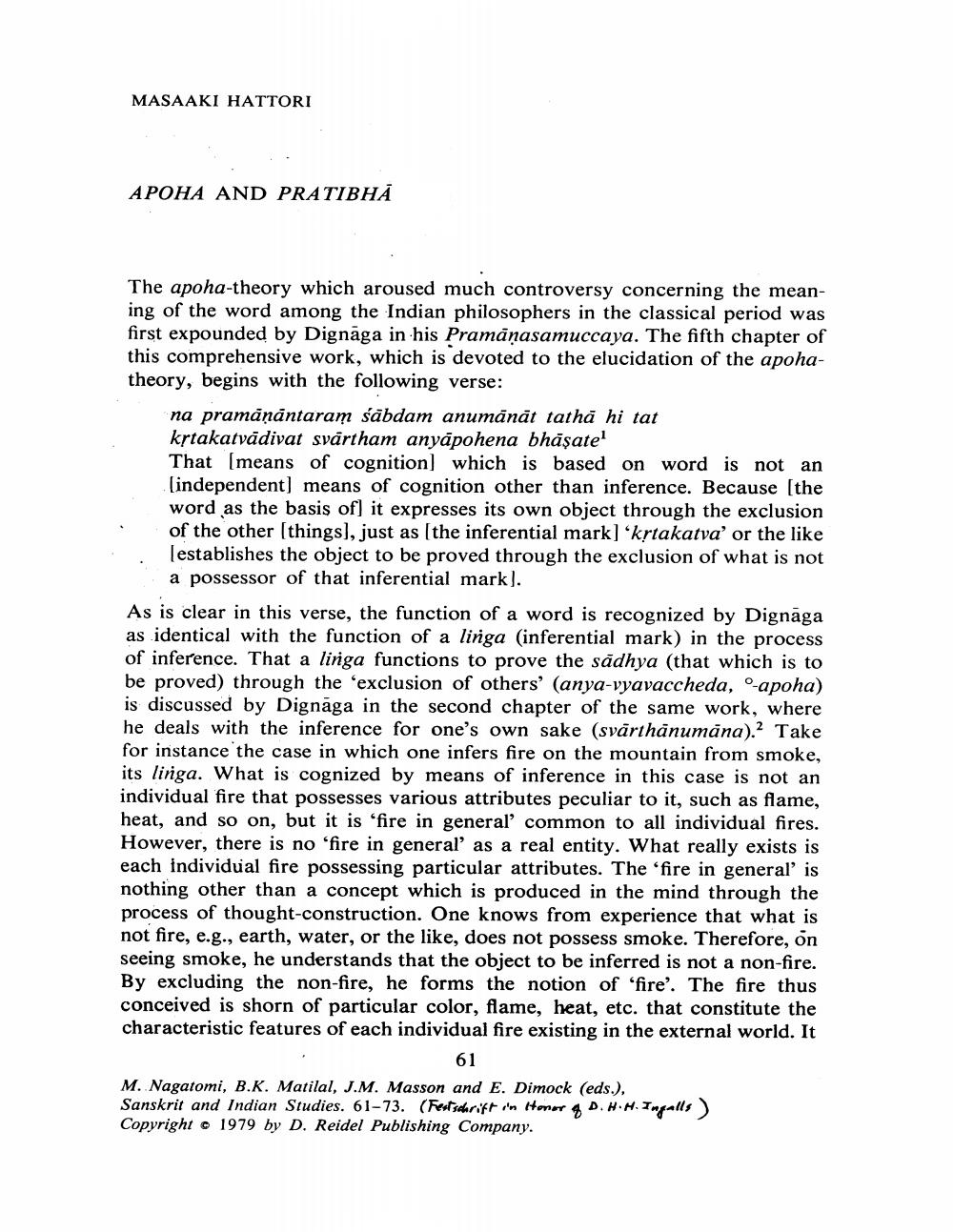Book Title: Apoha And Pratibha Author(s): Masakki Hattori Publisher: Masakki Hattori View full book textPage 1
________________ MASAAKI HATTORI APOHA AND PRATIBHA The apoha-theory which aroused much controversy concerning the meaning of the word among the Indian philosophers in the classical period was first expounded by Dignaga in his Pramanasamuccaya. The fifth chapter of this comprehensive work, which is devoted to the elucidation of the apohatheory, begins with the following verse: na pramāṇāntaram sabdam anumānāt tatha hi tat krtakatvädivat svårtham anyápohena bhdṣate' That means of cognition] which is based on word is not an [independent] means of cognition other than inference. Because [the word as the basis of] it expresses its own object through the exclusion of the other [things], just as [the inferential mark] 'krtakatva' or the like lestablishes the object to be proved through the exclusion of what is not a possessor of that inferential mark]. As is clear in this verse, the function of a word is recognized by Dignaga as identical with the function of a linga (inferential mark) in the process of inference. That a liriga functions to prove the sadhya (that which is to be proved) through the 'exclusion of others' (anya-vyavaccheda, apoha) is discussed by Dignaga in the second chapter of the same work, where he deals with the inference for one's own sake (svärthânumäna),2 Take for instance the case in which one infers fire on the mountain from smoke, its linga. What is cognized by means of inference in this case is not an individual fire that possesses various attributes peculiar to it, such as flame, heat, and so on, but it is 'fire in general' common to all individual fires. However, there is no 'fire in general' as a real entity. What really exists is each individual fire possessing particular attributes. The 'fire in general' is nothing other than a concept which is produced in the mind through the process of thought-construction. One knows from experience that what is not fire, c.g., earth, water, or the like, does not possess smoke. Therefore, on seeing smoke, he understands that the object to be inferred is not a non-fire. By excluding the non-fire, he forms the notion of 'fire'. The fire thus conceived is shorn of particular color, flame, heat, etc. that constitute the characteristic features of each individual fire existing in the external world. It 61 M. Nagatomi, B.K. Matilal, J.M. Masson and E. Dimock (eds.), Sanskrit and Indian Studies. 61-73. (Festschrift in Honor of D. H.H. Ingalls) Copyright 1979 by D. Reidel Publishing Company.Page Navigation
1 2 3 4 5 6 7 8 9 10 11 12 13
